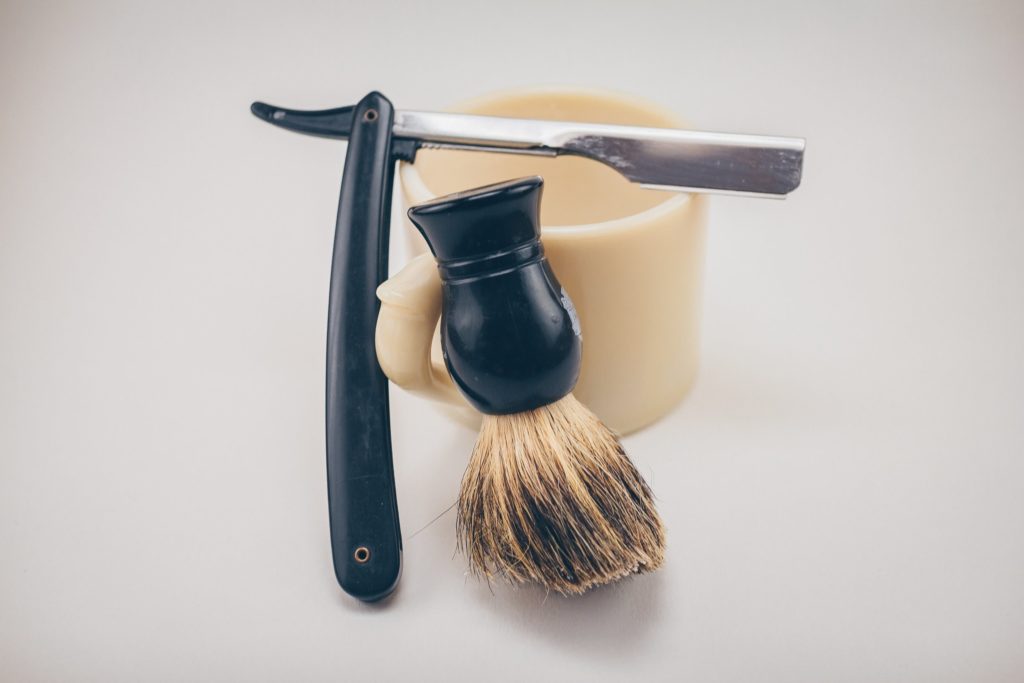
Proper shaving has become a lost art. Today’s average male has no clue about the fine art of the traditional wet shave that their grandfathers and some of their fathers used to take part. Instead, they’re only accustomed to the cheap and disposable shaving products that companies market. I’m not sure when or why it happened, but the tradition of passing down the secrets of a clean shave abruptly stopped. Thankfully, this glorious male ritual is making a comeback.
BENEFITS OF THE CLASSIC WET SHAVE
Reduced costs. An 8-pack of your typical 4-blade cartridge razors can set you back over $20. $20! That’s $2.50 per cartridge. The cost of a double-edged safety razor is no more than $.25. You can save some serious money switching over to a safety razor.
Additionally, you can save money by using traditional shaving creams and soaps. A can of the chemically packed gel goop that most drug stores sell can cost you up to $5 a can, and it doesn’t even last that long, and they don’t give you a quality shave. On the other hand, traditional shave creams and soaps are made out of natural materials. While their up-front cost may be a bit more than shaving gels, you require less product to get a proper lather. Thus, you end up saving more in the long run.
Reduced environmental impact. Traditional wet shaving with a double-edged safety razor uses less waste than shaving with cartridge razors. The only waste is a single metal razor blade and lather down the sink. Unlike today’s razor cartridges, a double-edged blade can easily be recycled. The tubes and bowls that most traditional shave creams and soaps are sold in produce less waste than those clunky non- biodegradable aerosol canisters that gels come in.
Better, more consistent shaves. Most men today walk around not knowing they have horrible shaves. Electric razors and the latest 5-blade contraptions irritate the skin more than needed, leaving razor burn, ingrown hairs, and redness. Shaving with a safety razor will eliminate the skin irritation and give your face a clean, healthy look because you’re just using one blade instead of several that chew up your face to cut your whiskers.
THE TOOLS
SAFETY RAZOR
Switching from a cheap disposable razor to a double-edged safety razor is like upgrading from a Pinto to a Mercedes. A safety razor is a machine. It’s nice holding a piece of heavy, sturdy metal in your hand while you’re shaving as opposed to a piece of plastic.
You can find safety razors in a variety of places. First, ask your grandpa if he still has his. Chances are he does. If Gramps doesn’t have one, try checking antique stores. I found my 1966 Gillette Superspeed Safety Razor in an antique store in Vermont. I only paid $10 for it. If you don’t have any luck there, stop by eBay and search for safety razors. You’re bound to find a few there. Finally, if buying a used safety razor doesn’t fancy you, you can always buy a new one from the several companies that still make them.
A highly recommended safety razor is from Merkur. They have several types to choose from at varying prices. Look to spend about $40 for a new safety razor.
BLADES
You can choose from a variety of different blades. Each blade has a unique sharpness and cutting ability. Experiment with different kinds until you find the ones you like.
SHAVING BRUSH
If you’ve never used a brush during shaving, you’re in for a treat. A brush helps hydrate the shaving cream to form a thick, rich shaving lather. Using a brush to lather up helps get the shaving cream up under each whisker which results in better, smoother shaves. Plus, it just feels nice on your face to lather up with a brush.
Brushes are made out of two types of animal hair: boar and badger. Boar bristles are stiffer than badger bristles and hold less water. Boar hair brushes are also cheaper. You can find a boar hair brush at Walmart for about $4. If you want to have a nice shaving experience, splurge and buy a badger hair brush. Badger brushes create more lather, and it feels a lot nicer on your face. You can pick up a nice badger brush at any Crabtree and Evelyn. If you don’t have a Crabtree in your area, try Amazon.

SOAPS AND CREAMS
If you’re like the average guy, you’ve probably been getting your shaving cream from a can. This blue/green, chemically laced goop does nothing for your face and smells like a hospital. Traditional shave creams and soaps, on the other hand, are full of natural ingredients that nourish your face and leave you smelling manly. While these high-quality creams and soaps may cost more than the can stuff, just a dab will create enough lather for you to lather up twice.
THE TECHNIQUE
Prep your beard. If you want a clean shave, you need to prep your beard adequately. The goal during beard prep is to soften your whiskers, so shaving is easier and causes less irritation. The best way to soften your beard is to shave right when you get out of the shower. The hot water from your shower should hydrate and soften your beard enough for shaving. If you haven’t showered, at least wet your beard with some hot water. A hot towel is a great way to soften the facial hair.
Lather up. Take a small dollop (about the size of a nickel) of your shave cream and place it in a mug. Take your brush that you’ve pre-soaked with water and swirl the cream around until you get a nice thick lather. Apply the lather with your brush in swirling motions. When your face is nice and covered, take a few strokes to smooth everything out.
The shave. Unlike shaving with cartridge razors, shaving with a safety razor requires some skill and technique. Once mastered, though, you should be shaving effectively in no time. The four keys to a successful shave with a safety razor are: 1) use as little pressure as possible, 2) angle the blade as far away from your face as possible, 3) shave with the grain, and 4) go for beard reduction, not beard removal. It will take some getting used to if you have used cartridges your entire life.
You don’t need to use pressure because the weight of the safety razor is sufficient to cut your beard. If you press down, you’ll end up hacking up your face. To help counter the tendency to apply pressure, try holding the razor by the tip of the handle. Angling your razor is probably the trickiest part. The proper angle is somewhere between 30 and 45 degrees. To get the proper razor angle, put the top of the razor head directly on your cheek, with the handle parallel to the floor. Now slowly lower the handle until the blade can cut your whisker. Practice on your arm if you’re not comfortable practicing on your face.
While shaving against the grain can get you that smooth feel, you risk slicing up your face and causing ingrown hairs. When you’re first starting out, shave with the grain of your beard. If you lather up and pass the razor more than once over your face, you’re guaranteed to get a smooth finish.
The goal with shaving should be gradual beard reduction, not beard removal in one deft swoop. Most men try to get rid of their beard in one pass of the razor. This hack-and-go technique is what causes the majority of skin irritations. If you want to avoid skin irritation, lather up and pass your razor over your face several times. Your face will thank you.
Post-shave. Rinse your face off with some cold water to close your pores. Treat your face to a nice aftershave. There are many to choose from, so pick the one you like best. Aftershave helps reduce any irritation that may have occurred and will leave your skin looking healthy.
Want to become an expert in all things beard-grooming? Catch up on our latest:











